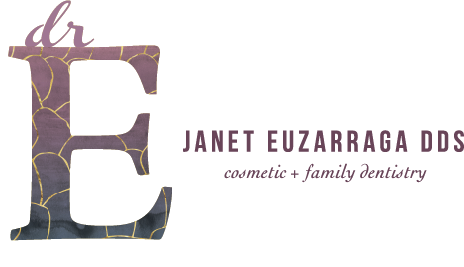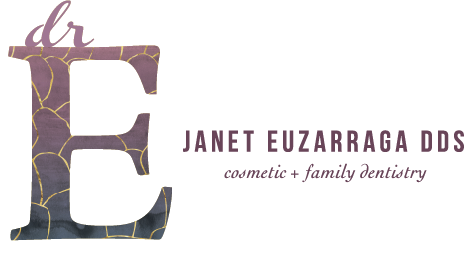Dental Terms You Should Know
It’s September and the kids have (finally) gone back-to-school in some way, shape or form — but the learning never has to stop for moms and dads! This includes building knowledge when it comes to you and your family’s dental health. Dr. E and her team have put together the following glossary of key dental terms to help our patients better understand their dental health and treatment options.
Pay attention, patients: Here’s a list of common dental terms from A to Z (no, there will not be a test administered before your next visit)! J
Abscess: Acute or chronic localized inflammation, probably with a collection of pus, associated with tissue destruction and, frequently, swelling; usually secondary to infection.
Amalgam: An alloy used in direct dental restorations. Typically composed of mercury, silver, tin and copper along with other metallic elements added to improve physical and mechanical properties.
Apex: The tip or end of the root end of the tooth.
Bicuspid: A premolar tooth; a tooth with two cusps.
Bonding: a process where a tooth-colored material is applied to the tooth to improve its color or shape. The natural tooth enamel is then fused together with bonding materials (porcelain or resins) to create a strong, natural tooth structure.
Calculus: Hard deposit of mineralized substance adhering to crowns and/or roots of teeth or prosthetic devices.
Clenching: The clamping and pressing of the jaws and teeth together in centric occlusion, frequently associated with psychological stress or physical effort.
Crowns: Dental crowns are designed to cover a tooth and help restore its normal shape and size to give the smile a more pleasing appearance.
Deciduous: Having the property of falling off or shedding; a term used to describe the primary teeth.
Dr. E: Your favorite local dentist (of course)!
Edentulous: Without teeth.
Gingiva: Soft tissues overlying the crowns of unerupted teeth and encircling the necks of those that have erupted.
Gingivitis: Inflammation of the gums, usually caused by poor oral hygiene.
Incisal: Pertaining to the biting edges of the incisor and cuspid teeth.
Inlay: A fixed intracoronal restoration; a fixed dental restoration made outside of a tooth to correspond to the form of the prepared cavity, which is then affixed to the tooth.
Laminate veneer: A thin covering of the facial surface of a tooth usually constructed of tooth colored material used to restore discolored, damaged, misshapen or misaligned teeth.
Malocclusion: Improper alignment of biting or chewing surfaces of upper and lower teeth.
Occlusal: Pertaining to the biting surfaces of the premolar and molar teeth or contacting surfaces of opposing teeth or opposing occlusion rims.
Odontoplasty: Adjustment of tooth length, size, and/or shape; includes removal of enamel projections.
Onlay: A dental restoration made outside the oral cavity that covers one or more cusp tips and adjoining occlusal surfaces, but not the entire external surface. It is retained by luting cement.
Periodontal: Pertaining to the supporting and surrounding tissues of the teeth.
posterior: Refers to teeth and tissues towards the back of the mouth (distal to the canines); maxillary and mandibular premolars and molars.
Radiograph: An image or picture produced on a radiation sensitive film, phosphorous plate, emulsion or digital sensor by exposure to ionizing radiation.
Resin: Resinous material of the various esters of acrylic acid, used as a denture base material, for trays or for other restorations.
Sealant: A coating of plastic material that is bonded to the crevices of the teeth to block decay and prevent cavities from forming in the pits and fissures of teeth.
Succedaneous tooth: A permanent tooth that replaces a primary (deciduous) tooth.
Temporomandibular joint (TMJ): The connecting hinge mechanism between the base of the skull (temporal bone) and the lower jaw (mandible).
Unerupted: Tooth/teeth that have not penetrated into the oral cavity.
Whitening: Cosmetic procedure to enhance the color and brightness of the natural teeth.
Zygomatic bone: Quadrangular bone on either side of face that forms the cheek prominence.
That’s it for today’s dental lesson! But The Dr. E Cosmetic & Family Dentistry team is always happy to answer your questions and address your dental concerns. Please contact us today to schedule a dental well-check or consult! 480-494-2435


